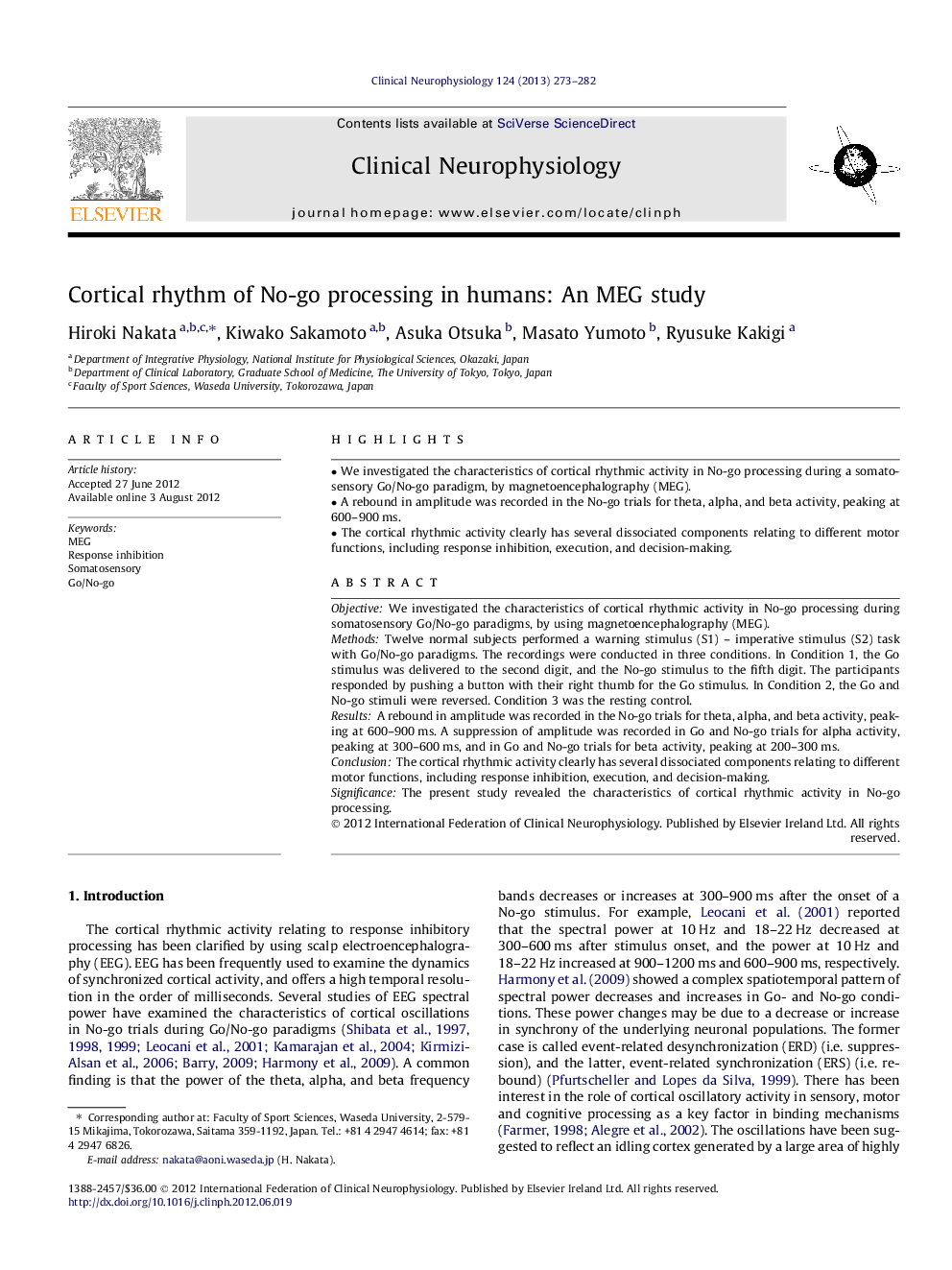| کد مقاله | کد نشریه | سال انتشار | مقاله انگلیسی | نسخه تمام متن |
|---|---|---|---|---|
| 3044608 | 1185004 | 2013 | 10 صفحه PDF | دانلود رایگان |

ObjectiveWe investigated the characteristics of cortical rhythmic activity in No-go processing during somatosensory Go/No-go paradigms, by using magnetoencephalography (MEG).MethodsTwelve normal subjects performed a warning stimulus (S1) – imperative stimulus (S2) task with Go/No-go paradigms. The recordings were conducted in three conditions. In Condition 1, the Go stimulus was delivered to the second digit, and the No-go stimulus to the fifth digit. The participants responded by pushing a button with their right thumb for the Go stimulus. In Condition 2, the Go and No-go stimuli were reversed. Condition 3 was the resting control.ResultsA rebound in amplitude was recorded in the No-go trials for theta, alpha, and beta activity, peaking at 600–900 ms. A suppression of amplitude was recorded in Go and No-go trials for alpha activity, peaking at 300–600 ms, and in Go and No-go trials for beta activity, peaking at 200–300 ms.ConclusionThe cortical rhythmic activity clearly has several dissociated components relating to different motor functions, including response inhibition, execution, and decision-making.SignificanceThe present study revealed the characteristics of cortical rhythmic activity in No-go processing.
► We investigated the characteristics of cortical rhythmic activity in No-go processing during a somatosensory Go/No-go paradigm, by magnetoencephalography (MEG).
► A rebound in amplitude was recorded in the No-go trials for theta, alpha, and beta activity, peaking at 600–900 ms.
► The cortical rhythmic activity clearly has several dissociated components relating to different motor functions, including response inhibition, execution, and decision-making.
Journal: Clinical Neurophysiology - Volume 124, Issue 2, February 2013, Pages 273–282